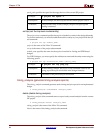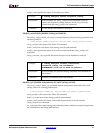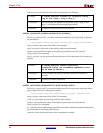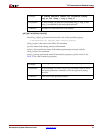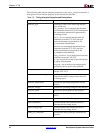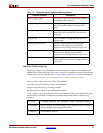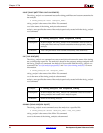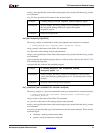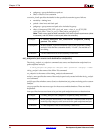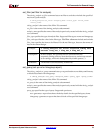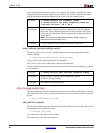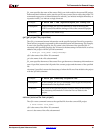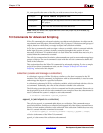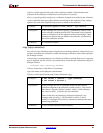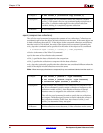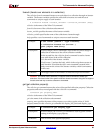
78 www.xilinx.com Development System Reference Guide
Chapter 3: Tcl
R
♦ padgroup—group definition on pad set
♦ offset—offset in/out constraint
constraint_details specifies the details for the specified constraint type as follows:
♦ maxdelay—timing in ns
♦ period—time in ns and clock pad
♦ padgroup—group name and pads to be included in group
♦ offset—[timegroup] P2S|C2P <clock_pad_name> <time_in_ns> [C2P|P2S
<clock_pad_name> <time_in_ns>] [<“data pad or pad group”>]
Note:
There are two types of offset constraints: P2S, which is pad-to-synchronous (offset
in constraint), and C2P, which is clock-to-pad (offset out constraint).
set_endpoints (set source and destination endpoints)
The timing_analysis set_endpoints command sets source and destination endpoints for a
path endpoints analysis.
% timing_analysis set_endpoints <analysis name> <qualifier> <category> <items>
timing_analysis is the name of the Xilinx Tcl command.
set_endpoints is the name of the timing_analysis subcommand.
analysis_name specifies the name of the analysis previously created with the timing_analysis
new command.
qualifier specifies whether source (from) or destination (to) points are being set for custom
analysis.
category specifies the resources type for the sources and destinations. These are family
dependent.
items specifies the resource items to be put into path endpoint sources or destinations.
Example: % timing_analysis set_constraint stopwatch_timing
period “13 sclk”
Description: In this example, a period constraint is set for the stopwatch_timing
analysis. Note that the constraint details, “13 sclk”, are entered as a
text string.
Tcl Return: 1 if the constraint was set successfully, 0 otherwise.
Example:
% timing_analysis set_endpoints stopwatch_timing from ffs *
Description: In this example, the asterisk (*) was used as a wildcard to add all items
in the flip-flop category to the sources for the path endpoints analysis.
Tcl Return: 1 if the endpoints were set successfully, 0 otherwise.



